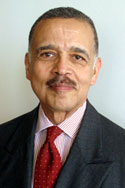ARCHIVES
OF EDITORIALS
July 1, 2004
Setting the record straight
The 30th anniversary of Boston’s desegregation
decision provided an excellent opportunity for the revisionists
to put a more appealing face on the bigots of that day. South
Boston City Councilor Jim Kelly insists that the only issue was
neighborhood schools.
That is patently false. In the 1960s the black population of Boston
began to grow while the white population declined. According to
the 1960 census the total population of Boston was 697,197, down
from 801,444 a decade earlier. There were 63,156 blacks (9.1%).
However, the black population was concentrated in Roxbury and
north Dorchester. Blacks did not object to going to neighborhood
schools. The problem was that the school buildings were deteriorating,
the schools were overcrowded and there was substantial evidence
that financial resources were not equally distributed throughout
the system.
In the spring of 1963 the late Ruth Batson, who was then chairwoman
of the Education Committee of the NAACP, presented a 14-point
list of complaints to the school committee. Among the issues were
requests to effectuate the open enrollment plan to allow students
to transfer from overcrowded schools, and an acknowledgement that
the schools were now “de facto” segregated because
of housing patterns.
The school committee at that time included the infamous Louise
Day Hicks, Thomas Eisenstadt (a lawyer), Arthur Gartland (an insurance
executive), Joseph Lee (a prominent Yankee public official), and
William O’Connor (a college professor). While the committee
was generally receptive, it refused to acknowledge the existence
of de facto segregation or that there might be racial discrimination
in the hiring and assignment of teachers.
When the school committee failed to admit the existence of a problem,
Rev. James Breeden and Noel Day, with suburban supporters, organized
a massive “Boston School Stay Out.” The concern at
that time was the quality of education, not racial integration
of the schools.
In a racially hostile campaign in 1963 the five incumbents were
re-elected to the school committee. In February of 1964 Rev. Breeden
led another boycott of the schools and established “Freedom
Schools” so that education could continue. Following this,
Owen Kiernan, commissioner of the State Board of Education formed
a committee to study racial imbalance in Boston schools.
His report published in March 1965 found 45 schools had more than
50 percent non-white students and were therefore racially imbalanced.
Hicks, Lee and O’Connor absurdly rejected the report which
was based on demonstrable facts. Nonetheless, the state Legislature
passed the Racial Imbalance Act in August 1965 to encourage school
districts to take measures to eliminate racially concentrated
schools.
Despite the law the school committee made no effort to re-assign
black students from overcrowded schools that were overwhelmingly
black. As a result Ellen Jackson and Elizabeth Johnson launched
“Operation Exodus” to provide transportation to seats
in underutilized schools in white neighborhoods. Rather than facilitate
the transfers the school administration became a hindrance.
After 10 years of frustrating efforts to obtain redress, it became
apparent that the heavy-handed policies of the school committee
and the administration had crossed the line from “de facto”
discrimination to the unconstitutional “de jure” type.
Judge W. Arthur Garrity had the integrity and the courage to decide
the case properly. The recalcitrance of Boston’s bigots
forced Judge Garrity to impose busing, the only remedy that would
not require the support of the rabid opponents of schools desegregation
to implement.
City Councilor Kelly is indeed no historian.
Home
Page

